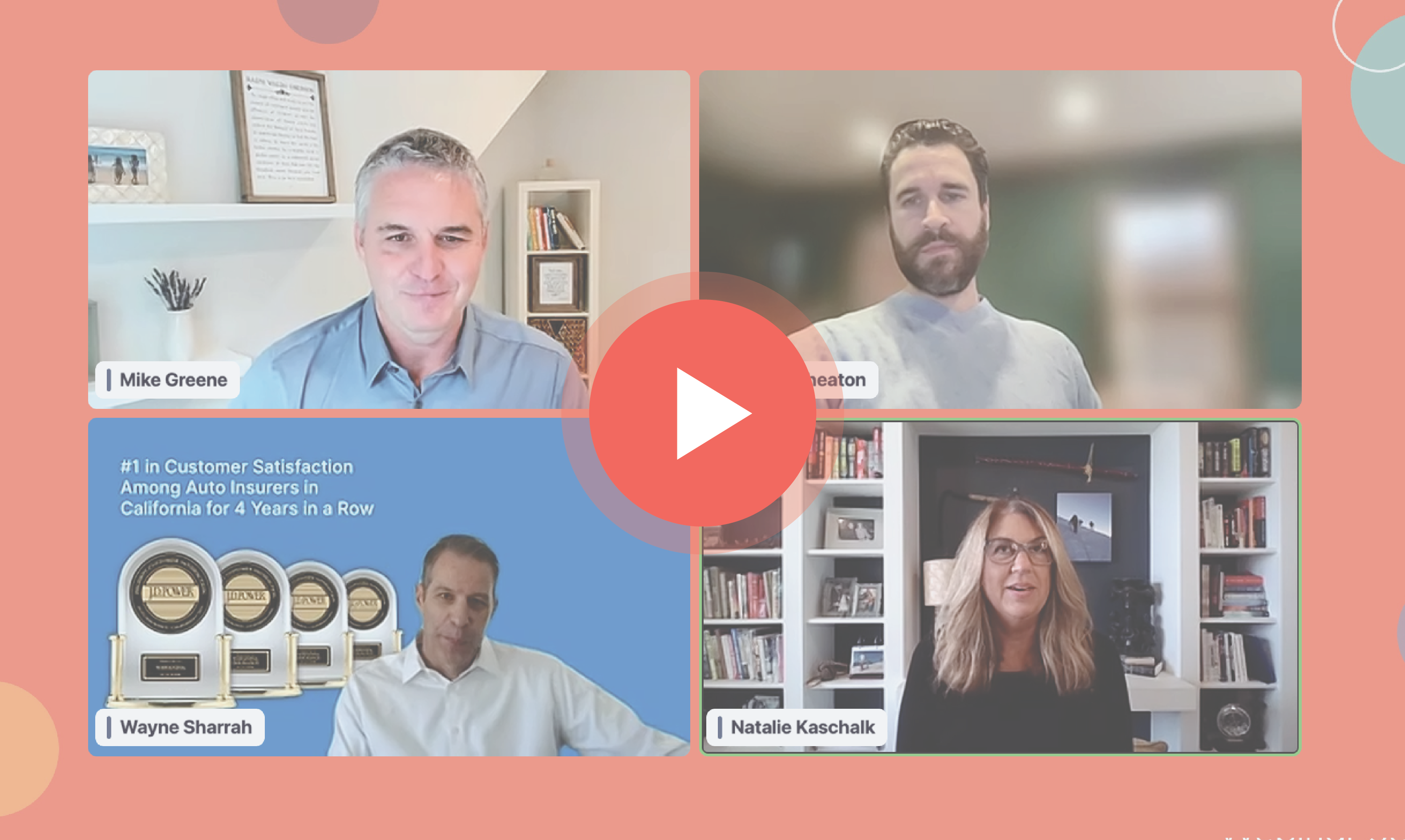A Vision for Better Total Loss Experiences: 5 Expert Takeaways
There are many headwinds facing the P&C insurance industry, including inflationary pressures, a shifting regulatory landscape, an increase in natural disasters, changing customer expectations, and economic uncertainty. So why should we talk about the total loss process now?
Wayne Sharrah, SVP, Chief Claims and Operations Officer, Wawanesa put it simply: “Total loss continues to be top of mind for me because this specific type of claim has not innovated materially in 35 years, and it’s time to force that.”
As challenges mount, experts say it will become more important to focus on what’s within carriers’ control, and ultimately, find ways to deliver on the customer experience while maintaining carrier costs.
Hi Marley hosted a webinar with industry experts on this topic, hosted by our Co-Founder and CEO Mike Greene.
Discover five interesting takeaways below and watch the full replay on-demand for even more insights.
1. Build Trust
Natalie Kaschalk, VP Insurance Services, Copart, recounted her college days when her first car, a Ford with an orange vinyl top, was totaled. Natalie didn’t know what to expect through the total loss process and found herself unable to get to her job.
“It was really horrific,” Natalie said, “I think we, as an industry, don’t understand the impact that it has on the individual level when you don’t have a car. When are you going to get the money to move on with your life? It’s hard.”
Aaron Wheaton, SVP, Head of Claims, Clearcover, emphasized the importance of establishing trust with customers facing an auto total loss—and trust is built through setting clear expectations and maintaining open communication.
“The more we can utilize technology to help make decisions to automate communication and streamline things from a customer perspective, trust will build,” Aaron said. “And when you build trust, and you set expectations and you meet them, it makes the settlement process a lot easier.”
2. Communicate Simply and Clearly
The use of acronyms and jargon only confuses customers going through the stressful and emotional process of losing a vehicle.
Wawanesa’s Wayne Sharrah said he looks at J.D. Power results to see how his company is doing. He received feedback from customers that there were too many terms they didn’t understand.
“They would say, I have no idea what that means,” Wayne said. He suggested that insurance carriers should avoid using jargon and instead use simple language so customers can understand the process. “We should start by educating our customers about how simple this process can be,” he continued. “Ultimately, providing clarity to customers will help improve our J.D. Power and collective NPS scores.”
The more complex total loss claims—particularly those that might involve an injury—require more explanation and communication in the process.
“With total loss claims involving an injury, there’s usually a pretty big impact, and the customer needs an explanation of all these different parts and pieces,” Natalie said. “It’s so overwhelming. It all has to be connected for the customer.”
3. Support Adjusters
Adjusters are on the frontlines of the customer experience. And adjusters who promptly engage with customers tend to deliver empathetic service, leading to increased customer satisfaction, reduced cycle times, and cost savings.
There’s an opportunity for efficiency in the process. By automating tasks that are quick and easy, adjusters can free up their time to focus on helping claimants with more complex issues.
Clearcover’s Aaron Wheaton said there’s also an opportunity to better connect the dots for adjusters and educate them on changes in process that they need to understand.
“We have to create an environment where adjusters feel supported and they can deliver,” Aaron said. “Our adjusters are tremendous partners to us. And I think we can oftentimes be better partners to them during the claims process.”
Hi Marley CEO Mike Greene added, “It sounds like we have yet another opportunity for collaboration as carriers—we can do a better job arming our agents so that we have one voice to the customer.”
4. Balance Speed and Quality
It comes down to balancing speed to resolution and claim quality. Natalie said every organization must consider how technology—including AI or a platform like Hi Marley—changes the adjuster-customer dynamic.
She added, “Think about how technology alters the expectations of quality you’ve determined for your organization.”
Aaron agreed with Natalie’s comments, adding, “We have the technology at our disposal. What are we doing to piece everything together so that we can quickly arrive at the optimal outcome?”
5. Simplify and Accelerate
“I think it’s time for us as an industry to say we can do better,” Wayne added.
Wayne mentioned one particular way to simplify the customer experience: empower one person to be the key point of contact for the customer, own the loss process, and answer customer questions.
Wayne mentioned that cycle time needs to improve for the customer, too. By identifying material impacts on cycle time and asking partners for their help improving the process, cycle time could be drastically cut down from 30 days to three days.
“Speed really matters because the only thing a customer wants to do when they’ve totaled their car is move forward, get another car, and get their life back on track,” said Copart’s Natalie Kaschalk.
Catch the full replay of the “Why Auto Total Loss is a Pressing Priority for Claims Leaders” webinar.
